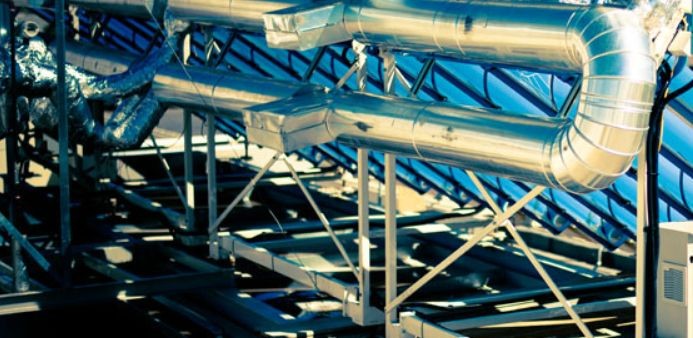DiGeSPO – micro Combined Heat and Power Innovative compact devices for residential and commercial buildings
DiGeSPO has developed a small thermodynamic solar system based on innovative concentrated solar power (CSP) and Stirling engine technologies. The resulting device aims at providing electrical power, heating and cooling for houses as well as residential and commercial buildings. Also, the system will be integrated in an architecturally acceptable manner and with low visual impact.

The challenge
Up to now, the high cost and low power efficiency of gas-fuelled micro Combined Heat Power (m-CHP) systems used to undermine the financial viability of such devices. Therefore, the development of innovative m-CHP, of which solar conversion m-CHP, represented an urgent need while being a high potential option. DiGeSPO (DIstributed CHP GEneration from small size concentrated Solar POwer) addressed this challenge. This European project, co-financed by the FP 7 grant funding programme, began in 2010 and ended in 2013. It was coordinated by the Fondazione Bruno Kessler (FBK) Research Institute (Italy).
The innovation
The remarkable feature of the DiGeSPO approach lied in the gathering of several new technologies to achieve a solar m-CHP. As a matter of fact, the developed m-CHP consisted of a series of five modules (see picture), each one addressing an innovative technology. These technical novelties are the following:
1. Development of a new thermal fluid vector for optimising the heat transfer between the collector and the Stirling engine.
2. Development of new evacuated solar tubes: they consist in soldering the external glass tube with and the internal metallic support. Also, the development of a ceramic-metal (CERMET) coating characterized by low emissivity and capable of operating at high temperatures has been developed: it provides better thermal absorption of concentrated solar energy.
3. Use of flexible glass as a reflecting material in order to adapt large parabolic trough solar concentrator technology towards more compact systems: this system is therefore compatible with residential or commercial buildings.
4. A new design for making a Stirling engine to work at lower temperatures in order to allow for cogeneration the medium temperatures generated by the miniaturized solar technology.
5. An improved solar tracking system.
As a result, the obtained compact power plant was composed of a series of efficiently designed parabolic dishes that concentrated solar radiation onto the evacuated tubes and in which a suitable thermal fluid was heated. This enabled afterwards the Stirling engine to perform thermal conversion and co-generate heat and electricity. Once installed on the roof of residential or commercial buildings, the m-CHP should be capable of converting solar radiation into both electricity and heat, thereby enhancing energy efficiency in buildings equipped with such a device.
Why did it work?
DiGeSPO has built on several R&D opportunities on the one hand, and the lack of an existing m-CHP efficient system on the other hand. The DiGeSPO multidisciplinary team has indeed focussed on improving existing technologies (i.e. by developing new coatings, new designs and new materials) and assembling them in order to provide end-users with a low cost energy producing device, which was not present on the market so far. Moreover, the project has covered the whole value chain, from R&D, development, testing and production of prototypes.
Further deployment
Most of the solar components developed (e.g. absorber, receiver, mirrors, tracking system and structure, mCHP) has been demonstrated in field, the maturity level of the related parts is estimated to be between 6 to 7 on the TRL scale. In a further step, the final demonstration of the system in relevant environment and commercial exploitation should be addressed.
Links:
The website